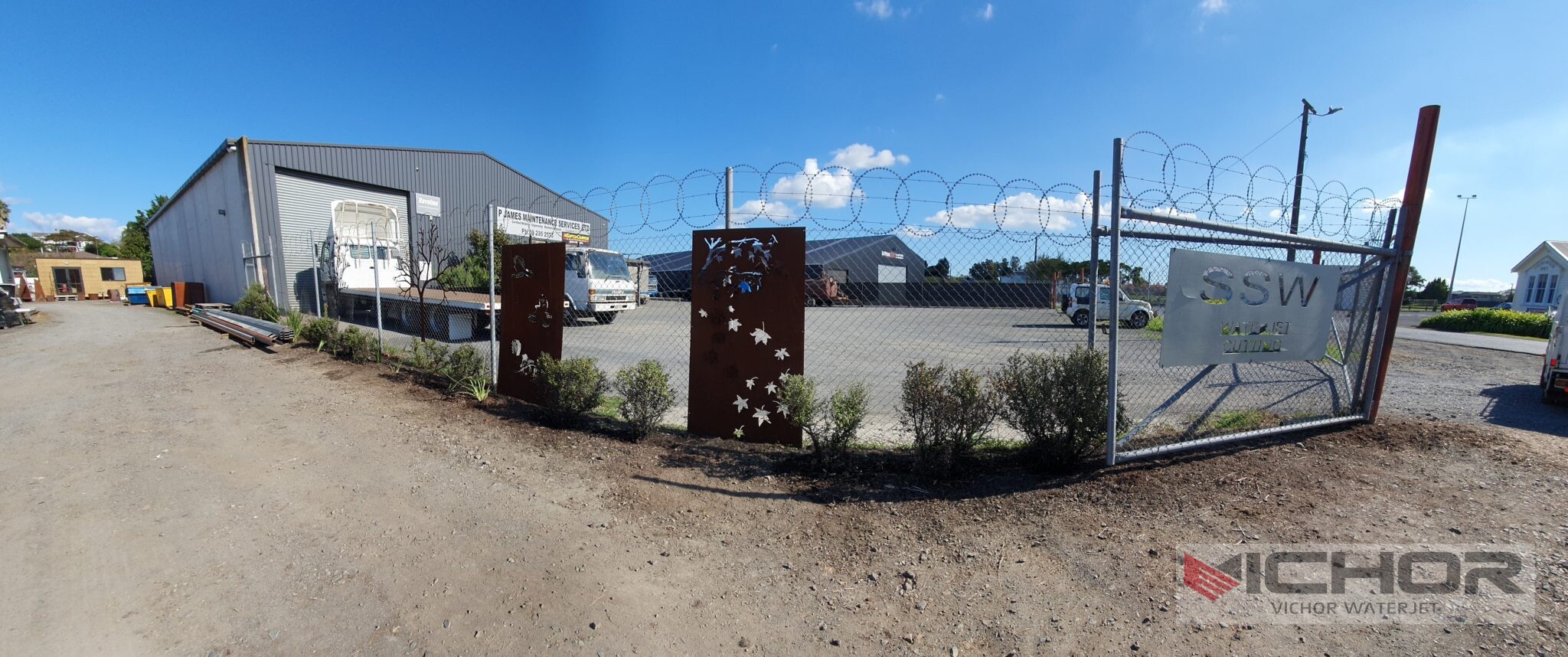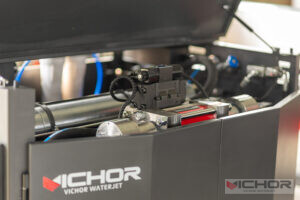
How a Water Jet Fabric Cutting Machine Transforms Textile Manufacturing
Imagine a cutting tool that slices through layers of fabric with the gentle precision of a surgeon’s scalpel, yet never gets dull, never generates heat, and never creates a messy frayed edge. This isn’t a vision of the future; it’s the reality of modern textile production, powered by the water jet fabric cutting machine. For designers and manufacturers demanding perfection, this technology has moved from a luxury to a critical component of an efficient, high-quality workflow. Moving beyond the limitations of blades and lasers, water jet cutting offers a unique combination of power and delicacy, redefining what’s possible with materials from delicate silk to rugged technical textiles. This article delves into the inner workings and undeniable advantages of this innovative technology, explaining why it has become the cutting tool of choice for forward-thinking operations.
What Exactly is a Water Jet Fabric Cutting Machine?
At its core, a water jet fabric cutting machine is a computer-controlled instrument that uses a hyper-pressurized stream of water to cut materials. Think of it as a supremely focused, incredibly powerful water hose. The process begins with a high-pressure pump, which intensifies regular water to extreme pressures, often exceeding 60,000 Pounds per Square Inch (PSI). This pressurized water is then forced through a tiny orifice, typically made of sapphire or diamond, creating a supersonic stream as fine as a human hair.
For many fabric applications, an abrasive substance like garnet is mixed with the water stream to enhance its cutting power. However, for most textiles, a “pure” water jet—using only water—is perfectly sufficient. This pure water stream cleanly erodes the fabric’s fibers without any harsh mechanical force, resulting in a pristine cut. The entire process is directed by sophisticated CAD/CAM software, which translates digital design files into precise cutting paths for the machine, ensuring flawless replication of even the most intricate patterns.
The Unmatched Advantages of Using a Water Jet Cutter for Fabrics
Why are so many manufacturers switching to this technology? The benefits of a water jet fabric cutting machine are multi-faceted and directly impact both product quality and operational efficiency.
No Heat-Affected Zone (HAZ): Unlike laser cutters, which use intense heat to melt or burn through material, water jet cutting is a cold process. This completely eliminates the risk of scorched, melted, or hardened edges—a critical advantage for synthetic fabrics like nylon or polyester that are particularly sensitive to heat.
Exceptional Precision and Edge Quality: The stream provides a “kerf” (the width of the cut) that is remarkably narrow, allowing for extreme detail and tight nesting of patterns to minimize material waste. The edges of the cut fabric are clean, smooth, and non-frayed, often requiring no further finishing.
Versatility Across Materials: A single water jet fabric cutting machine can handle an astonishingly wide range of materials. It can effortlessly cut through delicate silk, chiffon, and lace without snagging, and then switch to cutting multiple layers of denim, canvas, carpet, or even composite materials used in technical apparel.
Environmental and Operational Safety: The process produces no hazardous fumes or vapors, as there is no burning of material. This creates a safer and cleaner working environment for operators. Additionally, it is a dust-free process, which is essential for maintaining cleanliness in industries like automotive interiors or medical textiles.
Cold Cutting: The Key to Perfect Fabric Edges
The “cold cutting” nature of the water jet fabric cutting machine deserves its own spotlight. Heat-based cutting methods fundamentally alter the material they contact. For fabrics, this often means sealed edges that are undesirable for sewing or that have an unsightly, hardened appearance. The water jet’s cold stream severs the individual fibers without melting them, preserving the fabric’s natural texture and integrity right up to the cut line.
This results in edges that are ready for the next stage of production, whether that’s sewing, welding, or other assembly. The prevention of fraying is inherent to the process, as the high-pressure water cleanly separates the fibers rather than tearing or pulling them. This leads to a higher-quality final product and reduces the time and cost associated with post-cutting edge treatment.
Versatility in Action: From Fashion to Technical Textiles
The application of the water jet fabric cutting machine spans the entire spectrum of the textile industry. In the world of high fashion, it is used to cut intricate lace patterns, delicate sequined fabrics, and complex layers for wedding gowns without any damage. In automotive manufacturing, these machines are indispensable for cutting carpeting, headliners, trunk liners, and interior upholstery with perfect consistency.
The furniture industry relies on them for precision-cutting upholstery fabrics and foam composites. Furthermore, the technology is perfect for producing technical textiles, such as those used in airbags, parachutes, and composite reinforcements for aerospace, where absolute precision and flawless edges are non-negotiable for safety and performance. A single water jet fabric cutting machine can be the workhorse for all these diverse tasks.
Integrating a Water Jet System into Your Production Workflow
Adopting a water jet fabric cutting machine is a strategic decision that streamlines production. The integration is highly digital, starting with a design file (e.g., DXF, DWG) that is imported into the machine’s control software. The software then optimizes the cutting path for speed and material usage—a process known as nesting.
Because the cutting process is non-contact, there is no need for heavy clamping that can distort fabric. Instead, materials are often held in place on the cutting table by a vacuum system, which lies beneath the water. This vacuum also serves to swiftly evacuate the water and any tiny debris, keeping the material dry and the work surface clear. This seamless integration from digital design to physical part dramatically reduces lead times and empowers on-demand manufacturing.
Addressing Common Questions About Water Jet Cutting for Fabrics
Q1: Does a water jet fabric cutting machine leave the fabric wet?
A1: Surprisingly, no. The stream is so fine and the cutting speed so fast that the water has very little time to soak in. Furthermore, the vacuum table immediately pulls away the water and any moisture. In most cases, the cut pieces are ready for immediate handling and the next step in production.
Q2: Is it possible to cut multiple layers of fabric at once with a water jet?
A2: Absolutely. One of the great efficiencies of a water jet fabric cutting machine is its ability to cut through thick stacks of material in a single pass. The number of layers depends on the fabric type and thickness, but it is common practice for manufacturers to stack materials to maximize productivity.
Q3: How does the operating cost of a water jet compare to traditional cutting methods?
A3: While the initial investment can be higher than for a blade cutter, the operational costs are often lower when considering the full picture. Water jets reduce material waste through superior nesting, eliminate the cost of replacing dull blades, and lower labor costs by reducing or eliminating post-processing steps like edge sealing.
Q4: What kind of maintenance does a water jet fabric cutting system require?
A4: Regular maintenance is focused on the high-pressure system. This includes periodically replacing the high-pressure seals and the cutting orifice (which is a consumable part). For pure water cutting of fabrics, the maintenance is relatively minimal as there is no abrasive delivery system to maintain.
Q5: Can a water jet cut through materials other than fabric?
A5: Yes, this is a significant advantage. The same water jet fabric cutting machine can be used to cut plastics, rubber, foam, leather, and even thin metals. This makes it an incredibly versatile tool for facilities that work with a variety of materials, consolidating multiple cutting processes into one machine.
In conclusion, the water jet fabric cutting machine stands as a testament to innovation in industrial manufacturing. By offering a unique blend of cold-cutting precision, remarkable versatility, and operational cleanliness, it solves many of the persistent challenges faced by the textile industry. For any business focused on elevating quality, reducing waste, and embracing the future of digital fabrication, investing in this technology is a clear-cut decision.
continue reading



